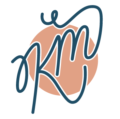We recently designed a self-paced online professional development course for an elementary school based on the principles of microlearning. Microlearning is delivering new information to be learned in small ‘chunks’. After a discussion with the school’s administrative team, we at KM Educational Consulting learned that an in-person professional development session was not feasible due to scheduling issues. Through candid conversations so we discovered that there was a need for this professional development to take place in the near future. Therefore, we proposed alternatives to in-person PD and as a team we settled on the self-paced online course format based on the needs of the school.
New approaches to professional development since Covid-19
Since the onset of the pandemic, teacher professional development has undergone a remarkable transformation. With traditional in-person workshops and conferences sidelined, educators quickly embraced virtual platforms and digital tools to continue their growth journey. Alongside the rise of webinars, online courses, and virtual collaboration spaces, educators began exploring self-paced learning modules and personalized development plans tailored to their individual needs and schedules. This flexible approach to professional growth not only enhances accessibility but also empowers educators to take ownership of their learning journey, ultimately leading to a more resilient and adaptable teaching workforce in the post-pandemic era.
Microlearning is not a new concept
Herman Ebbinghaus in the mid-1880s was studying memory and discovered concepts like “learning curve” and “forgetting curve”. Ebbinghaus’ “forgetting curve” depicts that we can lose more than half of newly learned information within a month! When we learn large amounts of information, we only recall parts of it. However, when we learn smaller bits of information that we consider ‘important’, we remember it better. So microlearning can actually help us retain more because we only engage with small amounts of information and for a short duration.
We went into designing this professional development with two underlying theories: microlearning and the VAK learning model. We created text-based, audio and visual learning materials in Google Classroom that would require about 15-20 minutes of learner engagement. Teachers had to proceed through the ‘chunks’ in a predetermined order as the learning material built on one another.
K12 Schools Embrace Microlearning for Professional Growth
This recent Edutopia article tittled “Setting Up In-House Microlearning for Teachers via a Message App” describes a school’s experimentation with delivering professional development using microlearning. The program encouraged participants to share experiences, try new teaching tools monthly, and engage in discussions via a group chat. The key strategies used (see the list below) fostered a sense of community among teachers and provided support and encouragement throughout the academic year. The article suggests that similar approaches could be beneficial for schools with limited time and resources.
Positive Reviews Illuminate Success
Our experience designing a self-paced online professional development course for an elementary school, grounded in microlearning principles, has been transformative. Faculty feedback showed that our microlearning self-paced online course was a success as teachers indicated that they enjoyed working through the smaller ‘chunks’ at their own pace.
Integrating microlearning into professional development journeys has the potential to perhaps reinvigorate our educators and ignite their passion for education and their inner drive for ongoing development and achievement!

